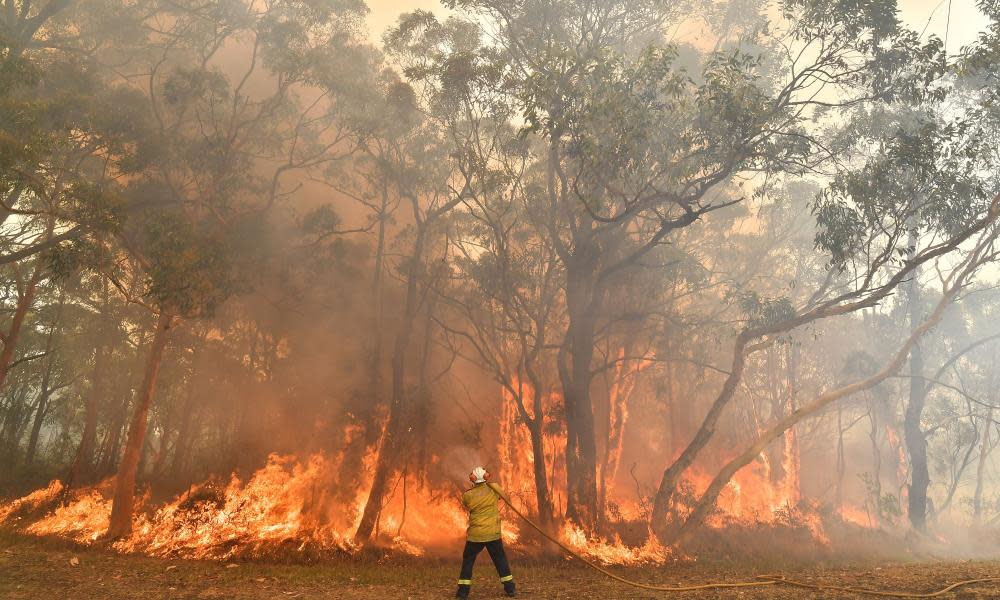Australia's bushfire crisis: how long are the fires and smoke expected to last?

With New South Wales and Queensland enduring months of bushfires, and smoke now blanketing towns and cities, many people are asking a simple but hard-to-answer question: how long will this last?
The Bureau of Meteorology’s seasonal outlook, covering January to March, says the weather is likely to be drier than average, and warmer than average. Only one part of Australia – north-west Western Australia – has increased odds of rain.
Related: Fireys and fury: exhausted volunteers decry PM’s claim they ‘want to be there’
Ben Shepherd, from the NSW Rural Fire Service, spoke to Guardian Australia to explain what this means for firefighters and residents. The short answer is: the fires and smoke will continue.
For the next three months, the below-average rainfall means no relief from the drought, and not enough to put out or prevent fires.
When will the bushfire season end?
“The statutory bushfire danger period would normally not end until the end of March,” Shepherd says. “But it is not unusual to see the fire conditions extend, depending on local conditions.”
This season, as firefighters, former fire chiefs and forecasters are telling us, is drier than normal.
“The driving factor for this season currently is the ongoing drought, and also the lack of any substantial rain on the forecast. At this stage the bureau continues to forecast a drier-than-average and warmer-than-average three months.”
This means things will get worse before they get better.
“Until such time as we have significant rainfall, we can expect an increase of fire activity across the NSW landscape,” Shepherd says.
How much rain would we need to impact the fires?
“We would need, in a number of areas, hundreds of millimetres of rainfall,” says Shepherd. “Not only to extinguish the fires we have, but to correct some of the deficits from the long-term lack of rainfall.
Related: Morrison responds to fears over bushfires but rejects censure of climate policy
“It’s not just a quick rain shower we need. We need days of steady rain to actually extinguish the fires and reduce the risk. And that is not on any forecast at the moment.”
According to the bureau, the rest of December will be drier than average for large parts of the country: NSW, Queensland, Victoria, the Northern Territory, Tasmania, south-west WA and eastern South Australia.
Between January and March, parts of the south-east and north-east of Australia will be likely drier than average, with the rest of the country having an equal chance of being wetter or drier than average.
But the bureau adds: “Several months of above-average rainfall would be needed to see a recovery from current long-term rainfall deficiencies.”
What about the smoke?
“Until such time as these fires are out, people can expect to see and smell that smoke,” says Shepherd. “Given the size of the number of these fires around Sydney, they have the potential to burn for a number of weeks.”
“I’m hoping we don’t have this level of fire activity for the remainder of summer. Given the size of these fires, that’s generating a significant amount of smoke.
“We will slowly gain the upper hand on these fires. However, until such time as that is achieved, people are going to see a large amount of smoke generated by fires that are, in some cases, greater than 100 hectares in size.”

 Yahoo News
Yahoo News 
